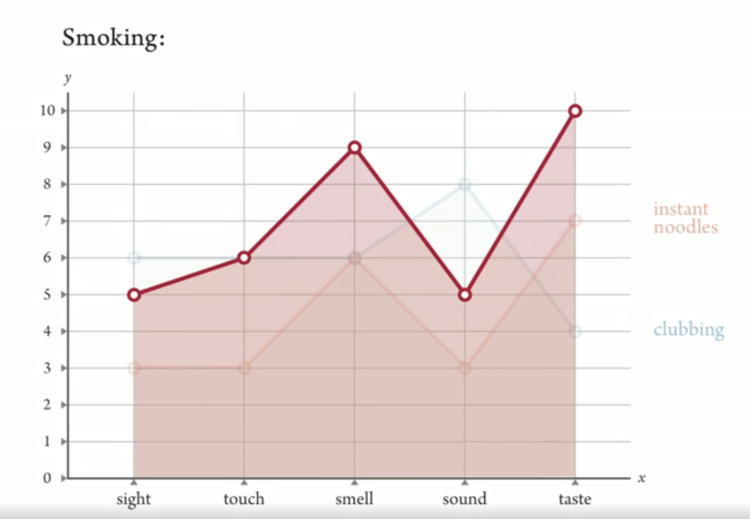Multisensory design is a new technique that extends beyond the typical focus on sight and sound to encompass all five senses: sight, hearing, touch, taste and smell. It aims to develop places, products and experiences that engage users on a deeper level by stimulating various senses simultaneously. This technique is not limited to one sector; it can be applied to architecture, product design, marketing, user experience design and other fields.
Industrial designer Jinsop Lee believed that great design appeals to all five senses. This was called by him the Five Senses Theory. Jinsop also gave a Ted talk on the subject years ago. He believes that all experiences can be rated using all five senses. For example, eating noodles can be rated by sight, smell, touch, taste and sound.

5 Senses Graph, created by Jinsop Lee
He continues to discuss his theory by evaluating the different experiences he has had in his life in terms of the five senses and applying this to the ‚The 5 Senses Graph‘ he made.




This is how the perfect experience would look like on the 5 Senses Graph – a horizontal line along the top. In the years of gathering data, Jinsop Lee says that the only experience managed to come close to being the perfect one is sex.
Jinsop Lee mentiones that many designers, including himself, focus on making things look beautiful and somehow tactile, while ignoring the other three senses. He is trying to change that completely. Lee wants to apply his theory to future designs and hopes to inspire others to do the same, making designs that engage all our senses.
The five senses theory is a very helpful way of evaluating various life experiences and then hopefully incorporating those best experiences into any form of design.